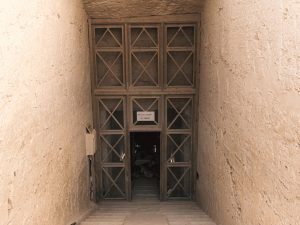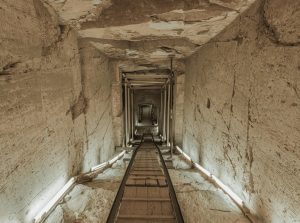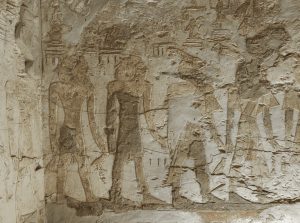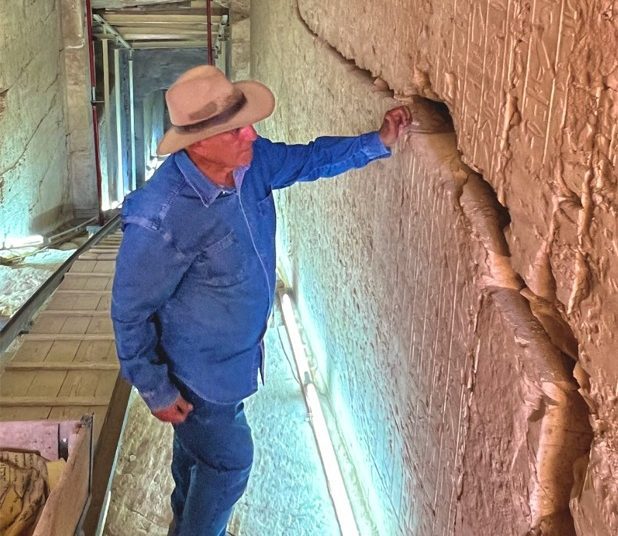Can anyone imagine that the tomb of Ramses II, who ruled 66 years and built numerous monuments across the country, has not yet revealed all its secrets?
Ramses II (1279-1213 BC) was one of the greatest warrior pharaohs in the era of the New Kingdom. He was an important military leader known for his extensive building and colossal statues of him found all over Egypt.
His coffin is now on display in Sydney’s Australian Museum along with another 181 precious artefacts in the international travelling exhibition “Ramses and the Gold of the Pharaohs”, from 18 November 2023 to 19 May 2024. The exhibition is organised by Cityneon.
This is the fourth stop after showing in Houston, San Francisco and Paris.
Famed archaeologist Zahi Hawass is the curator of the exhibition.
“When Cityneon called me to be the exhibition’s curator, I agreed on a request that they fund the restoration of Ramses II’s tomb. They agreed,” he said.
His mission started with the excavation in the tomb in the Valley of the Kings two years ago, as the first Egyptian ever worked there.
“During that period, we did a great job,” Hawass told The Egyptian Gazette.
Before Hawass, many foreign Egyptologists worked in cleaning the tomb.
Those included Henry Salt in 1817, German Karl Richard Lepsius, Howard Carter and French Egyptologist Christian Leblanc in the 1990s.

The entrance of the tomb is located on the flow, so it suffered badly from floods over the years. Thus they abandoned it.
“When we started working there, we removed 120,000 metres square of sand and rubble,” Hawass said.
He added that the tomb’s length is 700 feet. He believed that it is the largest one in the Valley of the Kings.
“We have information about Ramses tomb from ancient Egyptian sources. The Strike Papyrus, now in Turin’s Museo Egizio, mentioned that the Ramses tomb was robbed in the 29th year of Ramses III’s reign. The mummy was transferred in the Dynasty 21st to Deir el Bahari.
“The robbers randomly dug inside the tomb. It was easy for them to enter it,” he said.
Hawass said that it is the only tomb in the Valley of the Kings that has a complete pictorial programme: inscriptions, scenes, and architecture.
“For the first time we can elucidate its pictorial programme of the scenes and architecture. It contains the largest part of the Book of the Dead ever found inside a tomb.”
He added that scenes for Ramses II in front of the majority of Egyptian gods were also depicted.
Hawass believes that Ramses II built his tomb in the first or second year of his reign.
“Inside the tomb, we found the first part of the name which he used in the first two years of his reign, User-maat-re not User-maat-re Setep-en-re.”
His mission also found a cartouche of Queen Nefertari, his wife.
“We had never before found a cartouche of a queen inside a royal tomb,” he said.
Nefertari was one of Ramses’s eight wives.
“She was the most beloved of them to his heart. He built a temple for her and goddess Hathor in Aswan’s Abu Simbel. He also built her a wonderful tomb in the Valley of the Queens.”
Hawass said that his mission also found a well nine metres deep.
He added that previous Egyptologists and explorers discussed the reasons behind the presence of this well.
Some said that it was made to deceive robbers, so when they saw it, it didn’t come to their mind that a burial chamber lies behind it.
Others believed that the well was made to collect the flood water inside.
“We discovered that these opinions were wrong,” Hawass said.
“The well chamber has a religious function. It is decorated with fine reliefs, contains inscriptions and chapters from the Book of the Dead.”


The tomb also contains texts from the Book of Gates. This book narrates the passage of a newly deceased soul into the next world, corresponding to the journey of the sun through the underworld during the hours of the night.
“The entrance gate to Chapter Five is depicted and the god Horus is standing leaning on a walking stick on a boat in front of God Horus. Four Egyptians are standing in front of Horus, followed by four Nubians, four Africans, and four Asians. They are all depicted as the races of the Sun god Re.
“Ra addressing them as they are peoples of the world: I created you all. You all will go to paradise.
“The opposite side of the chamber, the 6th hour of the Book of Gates is depicted showing 12 mummies lying on funerary beds connected together by the body of a snake.
“Those 12 mummies are waiting for the resurrection when the god Ra united with his Ba.”
Hawass expects the work inside the Ramses’s tomb will be finished after two years.
“It will reveal new secrets from the life of this great king.”






Discussion about this post